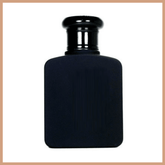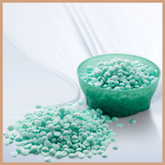Summer DIY: How to Make Citronella Candles for Beginners
If you’ve been spending more time outdoors in the garden this summer, you’re going to love our Citronella fragranced candle tutorial! This tried-and-tested recipe allows you to create a well-burning candle without having to work through your own extensive testing.

Plus, our Small Status jars come with their own sealed lid, allowing you to leave it out on your outdoor tables ready for when the rain breaks and you want to take advantage of those warm summer evenings!
If you’re ready to jump right into the tutorial, check out our YouTube video below walking you through the steps or keep scrolling to see a written tutorial with further details as well as more information on creating your very own Citronella scented candles.
Brand new to candle making? We have an extensive guide to making your first candle here with plenty of tips to help you on your way to making great-smelling and great-performing candles.
How to Make Citronella Candles
Difficulty Level: BeginnerMakes: 2 Candles
Important note: If advertising your candles as insect-repellent in any way, please be aware that you will need to get your product assessed and registered with The Health & Safety Executive (HSE for short). Insect-repellent products are regulated by the HSE and therefore, advertising any product as an insect-repellent without seeking assessment or registration could land you in hot water.
Materials & Ingredients

Ingredients
Materials
- 2x Small Status Jar & Lid
- 2x Eco10 Wicks
- Digital weighing scales
- Stainless steel or glass pouring jug
- Milk or digital thermometer
- Metal spoon
- Melting pot
- Pan
- Wick stickers or glue dots
- Wick centring tool
- Kitchen roll to protect your work surface
- Nitrile gloves (or similar protective gloves) and an apron. We’d also highly recommend the use of a chemical mask
Step 1 – Preparing your candle jars

Wash your candle jars in warm soapy water before use. This ensures there is no dust or other residue on the glass that may have formed whilst in storage/transit.
Make sure the jars are dried thoroughly once washed.
Next, take your wicks and put a glue dot on the underside of each sustainer (the metal bases of the wicks), place in the centre of the wick centring tools and pull into the slot. Place in your jars, making sure to position the centring tool correctly on the rim of the jar.
Adhere the wick to the jars base by gently pushing down on the metal sustainer. Pull the wick up carefully if its bending in the jar, ensuring it’s as straight as possible.
Your candle jars are now ready and you can move onto the next step.
Step 2 – Weighing out the wax

Place the melting pot on your scales and turn on. Make sure the scales are set to weigh in grams. Weigh out 294.4g of wax.
Step 3 – Melting the wax

Half fill your pan with cold water and place on your cooker/stove top. Sit the melting pot on top of the pan. Turn the hob/ring on and set to a medium - low heat. This is called the double-boiling method.
Top tip: The water in your pan should be no more than halfway up your melting pots bowl.

When the wax starts to melt (a visible pool of wax is forming), place the thermometer in the wax to check the temperature.
Top tip: Don’t leave your thermometer in the melting pot whilst the wax is melting as it will get hot from the water steam. Keep adding the thermometer to the wax at melting intervals to check it's not getting too hot.

Once the wax has fully melted and reaches 80-85 degrees Celsius, turn the hob off and take the pan off the heat.
Step 4 – Adding fragrance oil

Transfer the molten wax to a pouring jug. Place the jug on your scales if not already on there and turn on.

Add 25.6g of Citronella fragrance oil once the wax reaches 75 degrees Celsius. Stir continuously for around 90 seconds to ensure the fragrance oil is thoroughly mixed into the wax.
Step 5 – Pouring the wax into your candle jars

After stirring, allow the wax to reach 68-70 degrees Celsius, tap the jug on your work surface a few times to knock out any air bubbles within the wax and then start to fill your candle jars, pouring slowly.

Top tip: We recommend pouring the wax closer to the glass and not against or too close to the wick. This will reduce the likelihood of sink holes or bubbles appearing once the wax has set.
Once you’ve poured the wax equally between the jars, check that the wick isn’t bending too much. If it is, you can simply give it a little pull to straighten up. Be careful not to pull too hard!
Step 6 – Leave to set

Allow the wax to set fully before moving or touching the jars – usually around 2-3 hours.

Once the wax has hardened, you can remove the centring tools, being careful to not pull on the wicks. Trim the wicks to 5mm with wick trimmers or scissors.

Your candles will require around 7 days to cure before you are able to light them. Place the candles in a cool, dry area away from any heat or light sources until they are ready to use.
Top Tip: On the first burn, always allow the candle to burn for 3-4 hours. This will allow the wax to form a melt pool that reaches as close to the glass edges as possible. Remember to also trim the wick to 5mm before every burn thereafter. All candles should be extinguished once there is 1cm of wax left in the container.
With this tried and tested recipe you may not notice a full melt pool on your candle until during the second four-hourly burn. It’s perfectly normal to not get a full melt pool on the first burn. The thin layer of wax on the glass will melt the further down the candle burns.

You may also notice that this wax shrinks slightly upon setting. This wax may require a second pour to even the surface however, we’ve trialled different temperatures to reduce the amount of shrinkage that occurs.
If the shrinkage is severe (you notice quite a bit of dipping in the wax) you can gently heat the top of the candle with a heat gun to even out the surface. Do take care with this method, just a few short blasts should be sufficient enough.
Wet spots are also common with most container waxes. See our common issues with candles blog here which will help you to understand why this happens and steps you can take to reduce the likelihood of this happening.
The burn time of these candles is 30 hours each (based on burning the candles in 4 hourly bursts at a time).
What is Citronella?
Citronella is an essential oil that’s made during the distillation process of the Asian grass plant in the Cymbopogon genus. Due to its floral, citrus-like aroma, the name Citronella is from the French word meaning “lemon balm”.
It’s actually been used by consumers in candles for many years now, owing thanks to its wonderfully pleasant fragrance for helping to deter unwanted winged guests whilst dining outdoors or from entering your home. It’s also quite popular in soap making and perfumery.
What’s the difference between Citronella Essential Oil and Citronella Fragrance Oil?
Unlike fragrance oils which are formulated specifically for candles, essential oils main purpose is for use in aromatherapy or body products such as soap or pulse point oils. In fact, you’ll often find that essential oils perform much differently when used in candles, as they haven’t been tested for these types of products.
Now, whilst Citronella candles are ideally made with Citronella essential oil due to the scent being in its purest form, making and selling candles using essential oils can be quite tricky due to the need for having a CLP label professionally calculated and extensive testing being undertaken.
Today, thanks to modern science, we can now easily make candles with the next best thing - Citronella fragrance oil which carries the same fresh citrus and clean foliage scent notes. We even have a CLP label you can download directly from the fragrance oil product page.

Candle-making not going as planned? Check out our trouble-shooting guide for candle makers.
Ready to start selling? Our ultimate guide to selling your candles and wax melts will help.








Leave a comment
All blog comments are checked prior to publishing